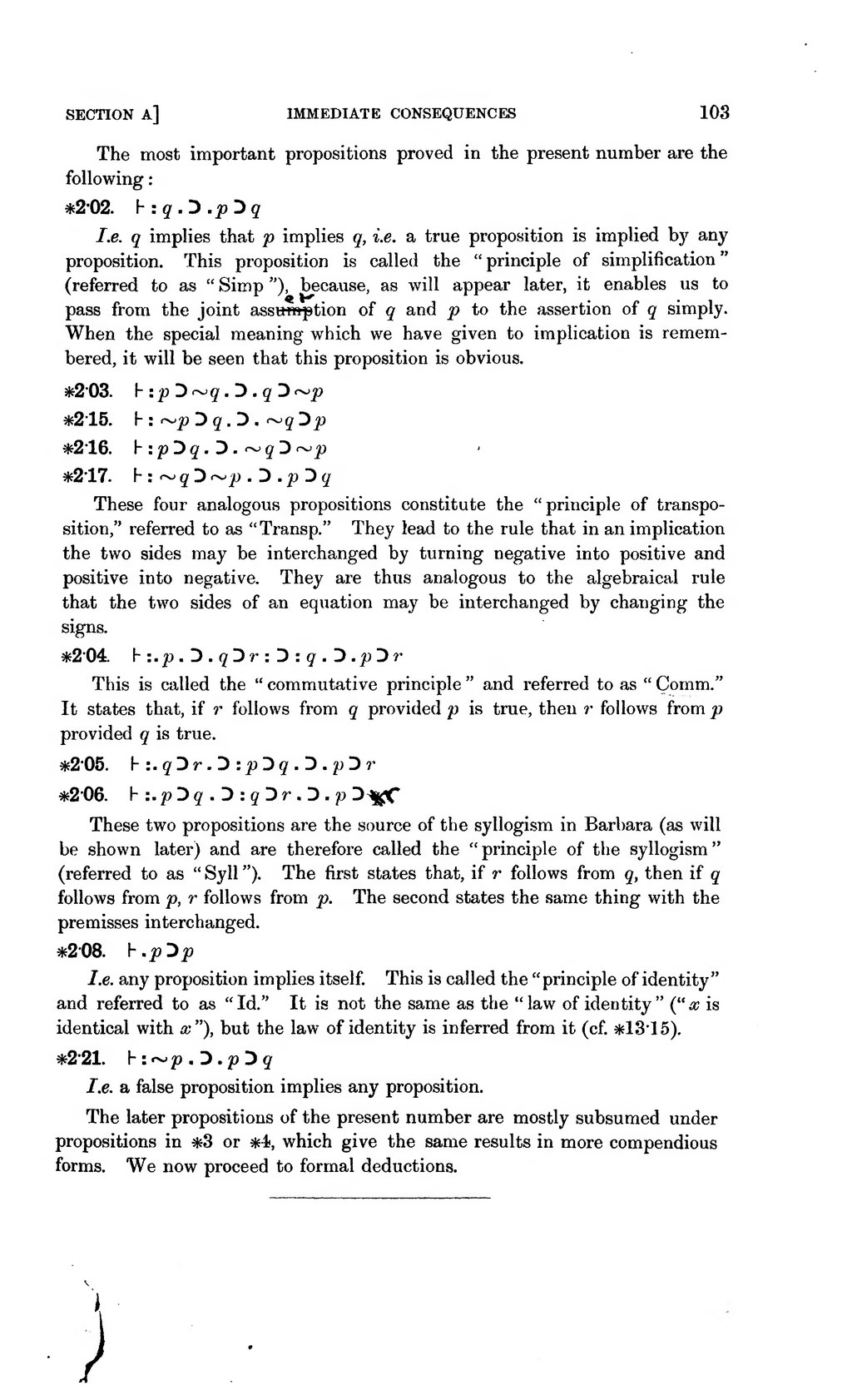The most important propositions proved in the present number are the following:
*2·02.
I.e. implies that implies , i.e. a true proposition is implied by any proposition. This proposition is called the "principle of simplification" (referred to as "Simp."), because, as will appear later, it enables us to pass from the joint assumption of and to the assertion of simply. When the special meaning which we have given to implication is remembered, it will be seen that this proposition is obvious.
*2·03.
*2·15.
*2·16.
*2·17.
These four analogous propositions constitute the "principle of transposition," referred to as "Transp." They lead to the rule that in an implication the two sides may be interchanged by turning negative into positive and positive into negative. They are thus analogous to the algebraical rule that the two sides of an equation may be interchanged by changing the signs.
*2·04.
This is called the "commutative principle" and referred to as "Comm." It states that, if follows from provided is true, then follows from provided is true.
*2·05.
*2·06.
These two propositions are the source of the syllogism in Barbara (as will be shown later) and are therefore called the "principle of the syllogism" (referred to as "Syll."). The first states that, if follows from , then if follows from , follows from . The second states the same thing with the premisses interchanged.
*2·08.
I.e. any proposition implies itself. This is called the "principle of identity" and referred to as "Id." It is not the same as the "law of identity" (" is identical with "), but the law of identity is inferred from it (cf. *13·15).
*2·21.
I.e. a false proposition implies any proposition.
The later propositions of the present number are mostly subsumed under propositions in *3 or *4, which give the same results in more compendious forms. We now proceed to formal deductions.















